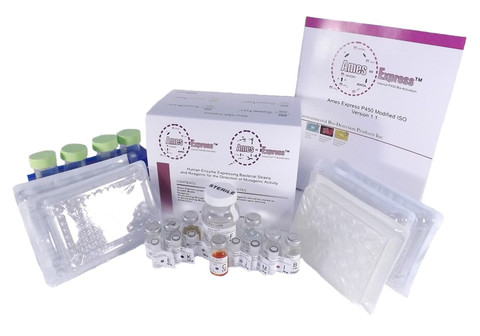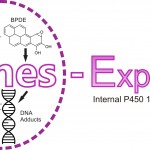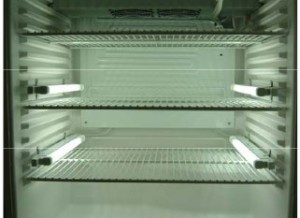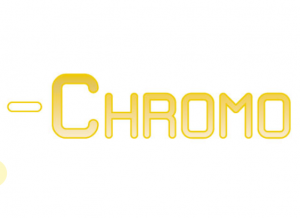Ames Express – P450 1A2
The EBPI 777/2205 has a hisD3052 mutation, a -1 frameshift mutation which affects the reading frame of a repetitive -C-G-C-G-C-G-C-G- sequence on the hisD gene. The hisD gene encodes histidinol dehydrogenase, an enzyme involved in the terminal step of histidine biosynthesis. EBPI 777 also contains a bicistronic protein expression vector, pP4501A2-red, which contains human cytochrome P450 1A2 and human NADPH-P450 reductase cDNA. The recombinant expression of these two proteins helps in the bioactivation of drug and foreign compounds into DNA-reactive mutagens. The co-expression of NADPH-P450 reductase with P450 1A2 increases the bioactivation level of the system. This system acts as an in vitro mimic involving the uptake and breakdown of xenobiotic compounds by a mammal and its liver enzymes, resulting in the generation of mutagenic products inside the living system.
Ames Express bacterial strains 777/59/17 expression of P450 1A2 and NADPH-P450 reductase
TA1538 EBP777 hisD3052 -1 Frameshift Recombinant Expression of P450 1A2
TA98 EBP59 hisD3052 -1 Frameshift Recombinant Expression of P450 1A2
TA100 EBP17 hisG46 Base-Pair Substitution Recombinant Expression of P450 1A2
Educational Applications
Click here to learn more the role of the Ames ExpressTM Strains for educational use.
Medical Toxicology Applications
Click here to learn more the role of the P450 1A2 in metabolizing of drug compounds
Another advantage with the recombinant P450 1A2 and NADPH-P450 reductase expression system is that the reactive metabolites will be generated inside the cell rather than outside the cell, as is seen with the S9 rat liver mix. As a result, this mode of bioactivation will allow short half-life reactive mutagens enough time to reach DNA sites allowing for an increase in sensitivity to mutagenesis.
The recombinant P450 protein also serves as a cost effective and animal friendly alternative to the S9 rat liver extract mix which is the current bioactivation standard.
Metabolically Activates Carcinogens:

MeIQ, Hetrocyclic amine, Alfatoxin B1
2-Amino-1-methyle-6-phenylimidazo (4,5-b) pyridine (PhIP)
3-Methyl-2-methylaminoimidazo (4,5-f)quinoline (IQ)
Polycyclic Aromatic Hydrocarbons (PAH)
The Ames ExpressTM System:
This system acts as an in vitro mimic involving the uptake and breakdown of xenobiotic compounds by a mammal and its liver enzymes, resulting in the generation of mutagenic products inside the living system. The recombinant P450 1A2 protein also serves as a cost effective and animal friendly alternative to the S9 rat liver extract mix which is the current bio-activation standard . Like EBPI`s GST expressing strains, the recombinant P450 1A2 reductase expression system is that the reactive metabolites will be generated inside the cell rather than outside the cell. As a result, this mode of bioactivation will allow short half-life reactive mutagens enough time to reach DNA sites allowing for an increase in sensitivity to mutagenesis.
P450 1A2 is a Phase 1 enzyme found primarily in the hepatic tissue and is responsible for metabolizing polyaromatic hydrocarbons (PAHs), aromatic amines and nitro aromatics. It performs a variety of chemical reactions on several different xenobiotic classes and is a key contributor to the mechanistic mutagenicity of well known carcinogens like benzo(a)pyrene (B[a]P), PhIP and 4-aminobiphenyl.
Click Here for information on GST T1-1 Ames Express Bacterial Strains.
Potential Applciations:
- Testing of pharmaceuticals for mutagenic activity
- Testing of industrial effluents for presence of possible mutagenic compounds
- Screening of municipal discharges for possible routine presence or spills of mutagenic compounds
- Screening of surface and/or groundwater for mutagenic residues
- Screening of potable water supplies for the presence of chemicals with mutagenic potential
- Screening of water soluble air pollutants for mutagenic agents
- Evaluation of pure or complexed raw mixtures for potential mutagenicity
- A convenient and easy to use teaching tool for university and college laboratories








